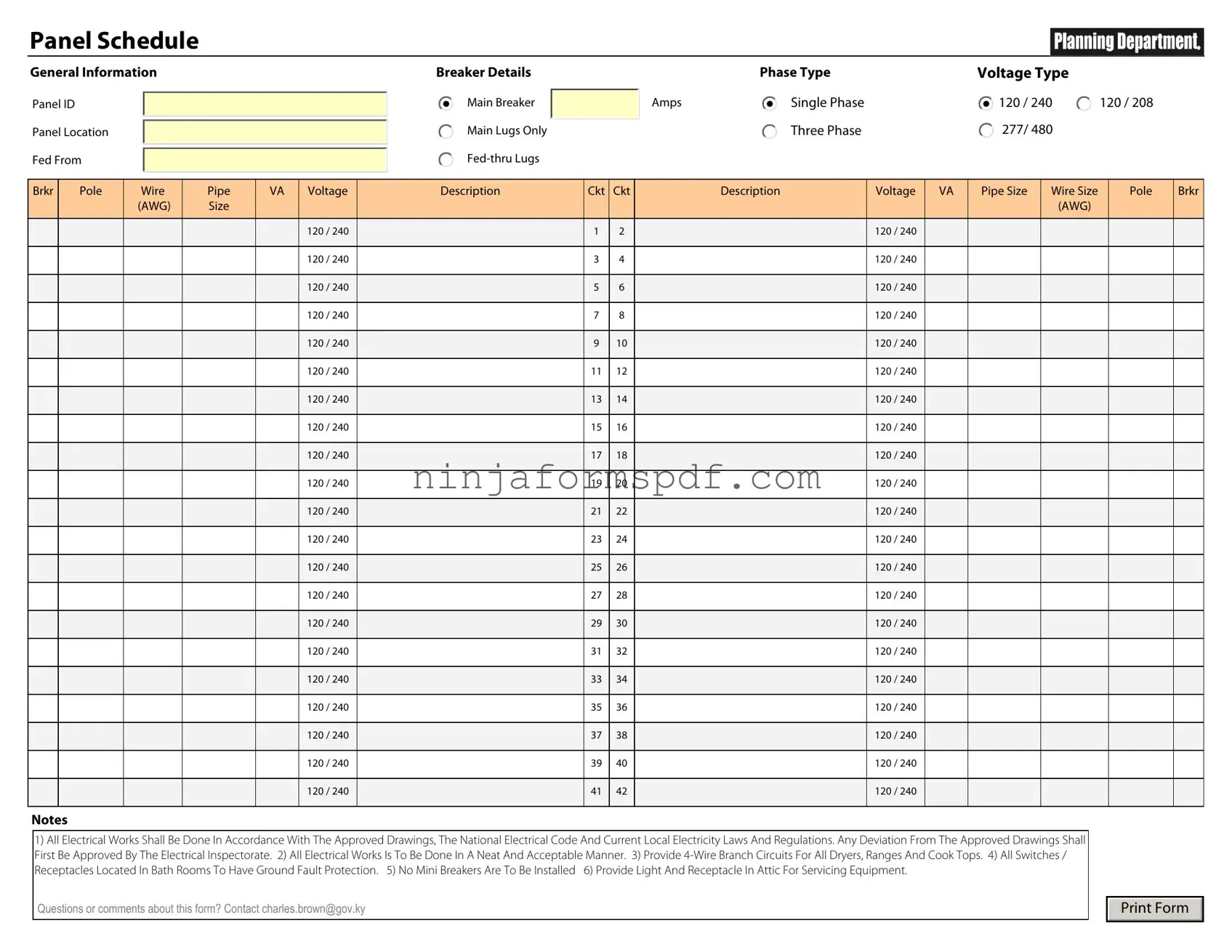What is an Electrical Panel Schedule?
An Electrical Panel Schedule is a detailed document that outlines the distribution of power for a building's electrical system. It usually includes information about the circuit breakers, including their respective amperages and what part of the building each circuit supplies power to. This schedule is essential for installation, maintenance, and troubleshooting of the electrical system.
Why is having an Electrical Panel Schedule important?
Having an Electrical Panel Schedule is crucial for several reasons. It ensures the safe and efficient operation of the electrical system within a building. By providing a clear mapping of circuits and their loads, it helps to avoid overloading circuits, which can lead to fires. It also simplifies maintenance and diagnostic activities, as electricians can quickly identify and access the relevant circuit for any necessary repairs or upgrades.
Who creates the Electrical Panel Schedule?
In most cases, the Electrical Panel Schedule is created by an electrical engineer or a licensed electrician responsible for designing or installing the electrical system of a building. It requires a thorough understanding of the building's layout and electrical load requirements to accurately distribute power across different areas.
When should the Electrical Panel Schedule be updated?
The Electrical Panel Schedule should be updated anytime there is a change to the electrical system. This includes adding new circuits, changing the purpose or load of existing circuits, or any renovations that alter the building’s electrical requirements. Keeping the schedule current ensures that the electrical system remains safe and functional.
What information is included in an Electrical Panel Schedule?
An Electrical Panel Schedule typically includes the panel name or identification number, the location of the panel within the building, a list of all circuits controlled by the panel, and details for each circuit such as the circuit number, the type of circuit, the amperage rating, and the area served by the circuit.
How can someone obtain an Electrical Panel Schedule for their building?
For a new building, the Electrical Panel Schedule should be provided by the electrical engineer or electrician who designs and installs the electrical system. For existing buildings, the schedule may be obtained from building maintenance records or directly from the building’s electrical panel, often found attached to the panel door. If the schedule is missing or outdated, a licensed electrician can create a new one by inspecting the electrical system.
Is the Electrical Panel Schedule required by law?
While specific requirements can vary by jurisdiction, many regions do require an Electrical Panel Schedule as part of the building's electrical documentation. It is often necessary for compliance with local building codes and for inspections. Always consult local building regulations to determine the specific requirements for your area.
Does an Electrical Panel Schedule need to be professionally certified?
In most jurisdictions, any documentation pertaining to a building's electrical system, including the Electrical Panel Schedule, needs to be either created or reviewed by a licensed electrician or electrical engineer. This ensures that the electrical system meets all safety and regulatory standards. Certification or approval from a relevant authority may also be required, depending on local laws and regulations.

